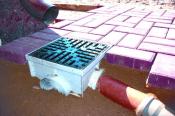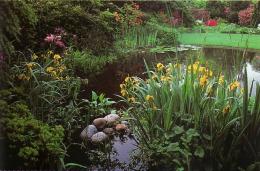Search
Login
Pond animals and pond plants
All the beauty of the pond and its shores is provided by plants planted by man. The individual feature of each pond depends only on the taste, hard work and financial capabilities of the owner.
Content
Planting methods in a pond
landing in baskets

Between May and September, plants are planted in a pond.
To facilitate the care of plants, they are best placed in plastic baskets that are installed at the bottom of the pond.

This method allows you to control the growth of plants, to take them out every few years from the pond for division and transplantation.
If you purchased a new seedling, immediately plant it in a basket, after thoroughly wetting the soil and lowering it into the pond.
If in front of you big pond, and the plant needs to be planted in a place where it’s difficult to reach, this work is performed by two, namely: the ropes are tied to the four corners and gradually lowered into stretch marks in the water.
Baskets with deep-water plants are not immediately lowered to the bottom, first the basket is set so that the bud at the end of the rhizome is several centimeters below the water level, and the leaves floated on the surface.
Then, as they grow, the basket is rearranged deeper and so on.
landing directly in the ground
When planting a plant directly in the ground, the earth around the plant must be covered with a layer of gravel.
Pond care, thinning plants
Do not get carried away by the number of plants, as aquatic and swamp plants have the ability to incredibly strong growth.
In two years, individual species will expand so much that you will have to deal with thinning.
Plants prone to overgrowth and forming especially many shoots are: reeds, calamus, marsh horsetail, aquatic iris, loosestrife monetized, mountaineer amphibian, long-leaved buttercup.

By planting plants in a pond, you create a cover of leaves on the surface of the water, leaves obscure the water and prevent the growth of algae, while maintaining the transparency of the water.
In addition, on hot summer days, the water does not heat up so much, and this is important for fish.
It should be noted that the largest plants have very beautiful flowers, of course water lilies prevail here.
With the help of other deep-sea plants, the pond is given a decorative look.
But do not thicken the pond: it is optimal that the leaves occupy about half the area of \u200b\u200bthe pond.
With the growth of deep-sea plants, they are taken out and divided.
In addition to beauty, plants in the pond absorb minerals and carbon dioxide from the water, thereby reducing the growth of algae.
Oxygenators are especially useful in this case - these plants are entirely under water and produce oxygen in large quantities.
Unlike plants living in water, coastal plants growing in shallow water are grown due to decorative qualities.
plant species

Water lilies - these are children of the sun, at least five hours a day, to show all their beauty, they should be under the rays of the sun.
One plant requires an area of \u200b\u200bat least 1-2 square meters of water surface, so it is better less is better.
If the water lilies do not have enough space, they will not bloom.

Aponogiton two-spike - in bright places, this plant releases a white spike-shaped inflorescence, emits a smell of vanilla, it is dicotyledonous and blooms all summer.
To preserve this tuberous rhizome, the plant needs to be grown in containers, sent for the winter to a cool room, then in the summer it will bring you a lot of joy, except for the most beautiful flowers on the surface of the water, bright green broad leaves over 10 cm long will float.

Three-lobed duckweed - duckweed is loved by fish and other inhabitants of the pond, although the owners of the pond are often not happy with these small floating plants.
But you should know: duckweed has an amazing ability to purify water, it fights well with algae, and is a delicious food for fish.
You just need to constantly monitor its quantity, as soon as the duckweed grows too fast, with a wide, not strong jet from the hose, drive it to one place at the edge of the pond, where you can easily collect it with a net and remove it.
Yellow egg - She prefers deeper places and blooms from June to August.
It has a rhizome immersed in silt; a large number of leaves and buds are formed on its top.
Flowers on very long pedicels slightly rise above the water, and people often call it a yellow water lily.
This plant is better recommended for larger bodies of water, as it is a highly growing plant and covers large areas of the water surface with its floating leaves.
This plant retains its underwater leaves even in winter and therefore contributes to the enrichment of water with oxygen, which is especially necessary for fish in winter.
Marshland - It looks like thick light green pillows at the bottom of the pond. The Germans call this plant a spring water star, it forms subtle flowers in the summer.

Turcha swamp - belongs to the family of primroses, blooms in May and June with its flowers rising above the water, on a straight dense stem.
At the ends of the stems, a beautiful rosette is formed from cirrus-dissected leaves, and in its center stands a flower stalk 15–45 cm high.
After flowering and falling of the petals, the plant is again immersed in water, where the fruit ripens.

Bulrush - prefers a depth of 10-30 cm and places protected from the wind.
Belongs to the sedge family.
The striped variety of lake reeds attracts with its white-striped stems.
These stripes on the stems serve as indicators of the life of the reeds - if the strip darkens, the plant turns green, which means it is in adverse conditions and needs to be transplanted.

Cattail small - the group thickets of cattail look very beautiful.
There are small cattail - suitable for small ponds, cattail broadleaf and narrow-leaved - suitable for large ponds.
The rhizome of cattail always grows in the direction of water.
Put in a container, it does not cause trouble.
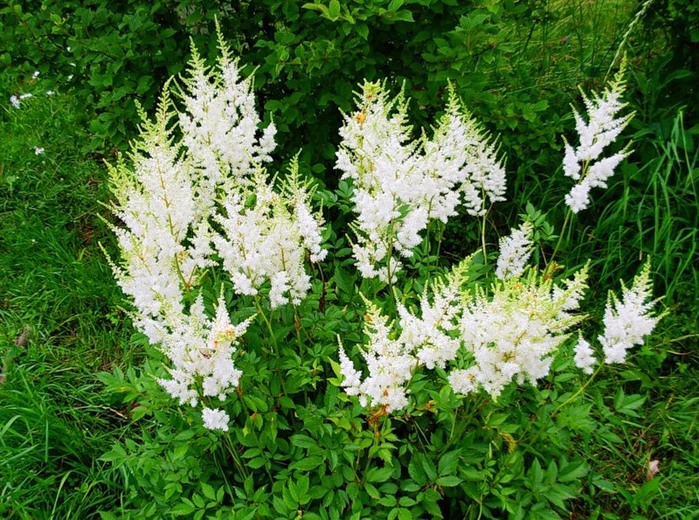
Spiraea - It is characterized by great growth, found in nature on moist meadows and coastal thickets, blooms in June and July.
The plant is particularly impressive in the vicinity of placun grass and various sedges in shady places.
Fish farming in ponds

fish livelihood conditions in a pond
In order to fully enjoy the beauty of your pond, it is not enough to plant plants, you need to get fish.
The question is, how many fish can be kept in a garden pond?
It must be remembered that for every fish the length of a finger, must have at least 50 liters of water.
You can’t immediately release freshly bought fish into the pond, you must hold them for a week in an aquarium with water from the pond, or, in the language of doctors, go through quarantine.
If the fish feel good in the pond, then they are able to breed especially goldfish.
Dragonfly larvae and bugs - swimmers and other predators will appear in the pond, but this is a natural way of life and you should not worry about fish juveniles.
feeding fish
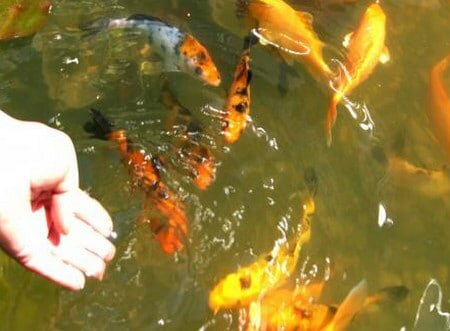
What and when to feed the fish, usually the fish themselves find food - this is duckweed, mosquito larvae, algae, etc.
In the new pond there is little natural food for fish and therefore they need to be fed.
Food sold in specialized stores contains in the right amount everything you need for the good development of pond fish.
When feeding fish, the following condition must be observed: feed in the form of flakes should be given as much as they can eat in 10 minutes, otherwise the food will settle to the bottom and begin to rot.
This is the first.
To prevent fish from eating the tender shoots of freshly planted plants, plant foods - tetrafill are also needed.
This is the second.
In the overgrown pond, this top dressing becomes superfluous.
In spring, feed should be given more often than in the summer.
In summer, ponds are rich in natural food.
Fish quickly get used to feeding time and place if they are fed daily at a specific time and place.
Hearing the steps of a person, they will swim to the feeding place.
When the water temperature is below 10 degrees, the fish stop feeding.
The pond and fish require a lot of attention and good care, because the pond overpopulated with fish and excessive feeding in a short time will lead to clouding of the water and fish diseases.
types of fish
There are different types of fish. The following fish species are recommended for garden ponds.

Koya- This breed of fish for any large pond. But this fish does not like clear water, like all cyprinids, it readily digs soil.

Lin, crucian - These are pronounced inhabitants of the ponds. They feed on the remnants of food that has sunk to the bottom.

Ide - The most common breed after a goldfish.
This is a sociable fish, willingly keeps near the surface of the water, prefers clean water.
But an ide just launched into the pond can jump out.
It takes at least a week to adapt.

Minnow - fish of the cyprinid family, feeds on live food, which is found in the pond.
In summer, miners feel uncomfortable in warm and oxygen-poor water.
It is necessary to aerate the water of the pond.
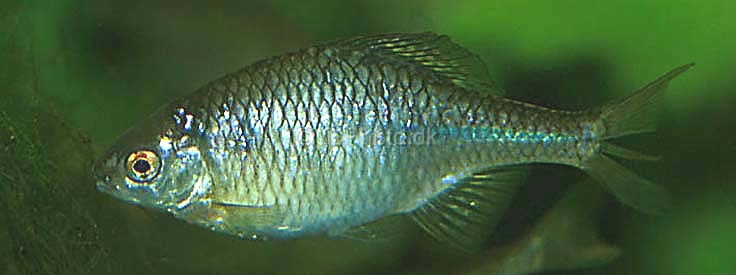
Gorchak - This is a schooling fish, not suitable for a small pond.

gold fish - loves a large amount of water.
In a shallow, especially in a concrete pond, he feels bad. Young fish acquire a red color only in the second year of life.
Goldfish can hibernate at home (aquariums).
In the spring on the first sunny days, goldfish stay at the surface, and in the middle of summer they fall into a deep, cold layer of water.
They are calm and peaceful.

Bleak - keeps at the surface of the water, hunting for insects.
Bleeding does not spare gentle aquatic plants, so it is kept in overgrown ponds.
Bleak is a resident of large ponds.
Verkhovka - This is a very mobile fish, lives mostly in the deeper layers.
This is a schooling fish, so there must be at least 10 specimens in the pond.
Fish loves a pond with dense thickets and stones, eats mosquitoes, larvae, algae, etc.
